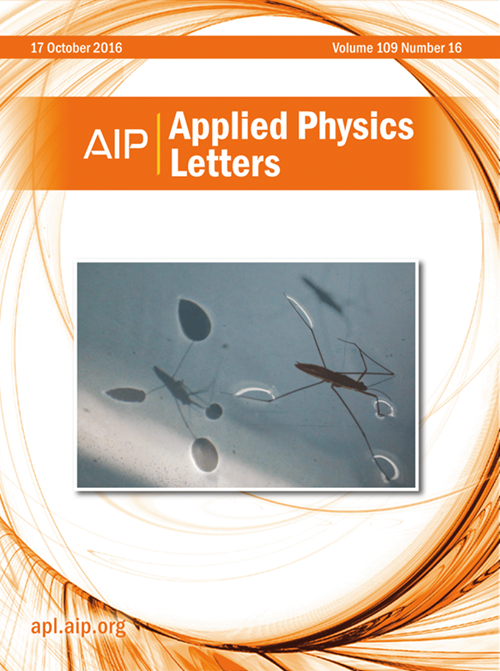Six-band strong nonreciprocal radiation at small angle of incidence 5.9° by toroidal cylinder arrays
IF 3.5
2区 物理与天体物理
Q2 PHYSICS, APPLIED
引用次数: 0
Abstract
Nonreciprocal thermal radiation overcomes Kirchhoff's law which requires spectral absorptivity to equal emissivity, establishing a distinct radiative heat transfer mechanism. However, among the previously reported nonreciprocal thermal radiators, research on dual-polarized multi-band systems remains relatively scarce and is limited to large incidence angles, which limits the practical application of nonreciprocal thermal radiators. To address these challenges, we propose a six-band, dual-polarized strong nonreciprocal thermal radiator comprising a silicon-based void ring cylinder periodic array, a magneto-optical material layer (InAs), and a silver (Ag) metal reflector. When the applied magnetic field strength is 2.5 T and the incidence angle is 5.9°, six strong nonreciprocal peaks can be shown with nonreciprocity of more than 80% under transverse electric (TE) polarization and transverse magnetic (TM) polarization. Through the study of coupled mode theory and electromagnetic field distribution, the physical mechanism of the strong nonreciprocity of the device structure in this work is revealed. It is believed that this study of six-band, dual-polarized strong nonreciprocal thermal radiation at small angles of incidence has the practicability of energy harvesting control and thermal radiation.环形圆柱阵列5.9°小入射角下的六波段强非互反辐射
非互易热辐射克服了基尔霍夫定律要求光谱吸收率等于发射率,建立了一种独特的辐射传热机制。然而,在以往报道的非倒易热辐射体中,对双极化多波段系统的研究相对较少,且仅限于大入射角,这限制了非倒易热辐射体的实际应用。为了解决这些挑战,我们提出了一种六波段,双极化强非互易热散热器,包括硅基空洞环形圆柱体周期阵列,磁光材料层(InAs)和银(Ag)金属反射器。当外加磁场强度为2.5 T,入射角为5.9°时,在横向电极化和横向磁极化下均可出现6个强非互易峰,非互易度大于80%。通过对耦合模式理论和电磁场分布的研究,揭示了器件结构强非互易性的物理机制。认为该小入射角六波段双极化强非互易热辐射的研究具有能量收集控制和热辐射的实用性。
本文章由计算机程序翻译,如有差异,请以英文原文为准。
求助全文
约1分钟内获得全文
求助全文
来源期刊

Applied Physics Letters
物理-物理:应用
CiteScore
6.40
自引率
10.00%
发文量
1821
审稿时长
1.6 months
期刊介绍:
Applied Physics Letters (APL) features concise, up-to-date reports on significant new findings in applied physics. Emphasizing rapid dissemination of key data and new physical insights, APL offers prompt publication of new experimental and theoretical papers reporting applications of physics phenomena to all branches of science, engineering, and modern technology.
In addition to regular articles, the journal also publishes invited Fast Track, Perspectives, and in-depth Editorials which report on cutting-edge areas in applied physics.
APL Perspectives are forward-looking invited letters which highlight recent developments or discoveries. Emphasis is placed on very recent developments, potentially disruptive technologies, open questions and possible solutions. They also include a mini-roadmap detailing where the community should direct efforts in order for the phenomena to be viable for application and the challenges associated with meeting that performance threshold. Perspectives are characterized by personal viewpoints and opinions of recognized experts in the field.
Fast Track articles are invited original research articles that report results that are particularly novel and important or provide a significant advancement in an emerging field. Because of the urgency and scientific importance of the work, the peer review process is accelerated. If, during the review process, it becomes apparent that the paper does not meet the Fast Track criterion, it is returned to a normal track.
 求助内容:
求助内容: 应助结果提醒方式:
应助结果提醒方式:


